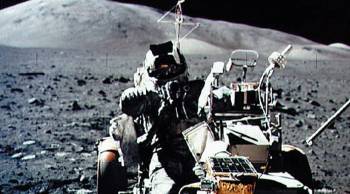Lockheed Martin moves beyond weapons to clean water with graphene
Lockheed Martin moves beyond weapons to clean water with graphene
Defense contractor Lockheed Martin has discovered a way to make desalination 100 times more efficient. And that could have a big impact on bringing clean drinking water to the developing world.
The process is called reverse osmosis, and the material used is graphene — a lot like the stuff you smudge across paper with your pencil.
“This stuff is so thin and so strong, it’s a remarkable compound, it is one atom thick,” says Lockheed Martin senior engineer John Stetson. “If you have a piece of paper that represents the thickness of graphene, the closest similar membrane is about the height of a room.”
The new material essentially acts as a sieve, allowing water to pass though while salts remain behind. Graphene could make for smaller, cheaper plants that turn salt water into drinking water, but it could also have uses in war zones as a portable water desalinator.
“Lockheed really is concerned with the broadest aspects of global security [and] maintaining safe environments and that includes water,” says Stetson.
To hear about more graphene applications, click on the audio player above.
There’s a lot happening in the world. Through it all, Marketplace is here for you.
You rely on Marketplace to break down the world’s events and tell you how it affects you in a fact-based, approachable way. We rely on your financial support to keep making that possible.
Your donation today powers the independent journalism that you rely on. For just $5/month, you can help sustain Marketplace so we can keep reporting on the things that matter to you.


















